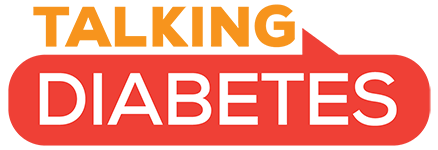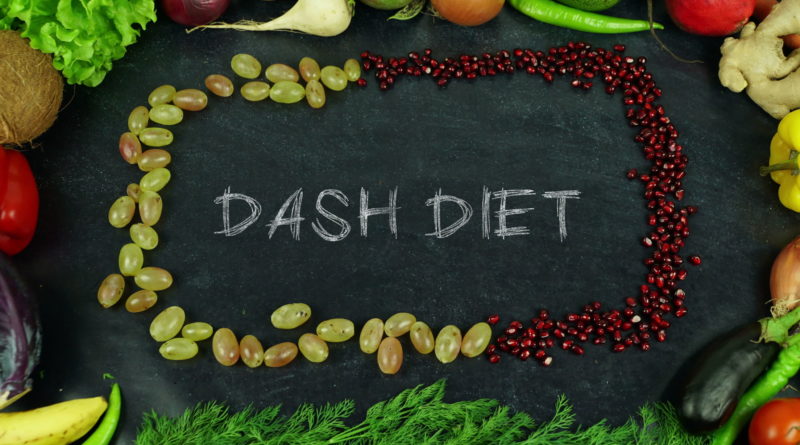Eating Patterns and Type 1 Diabetes with the DASH Diet
Eating Patterns and Type 1 Diabetes with the DASH Diet
The DASH (Dietary Approaches to Stop Hypertension) diet is an eating plan that has earned a number of accolades, including the U.S. News and World Report “best overall” diet for many years.
A brief history
The DASH diet originated back in the early 1990s when the National Institutes of Health (NIH) funded research to study the effect of dietary interventions for treating hypertension, or high blood pressure, without the use of medication. The DASH study involved 456 people who were assigned to one of three diets to see the effect on blood pressure.
The diet that lowered blood pressure the most was the one that included fruits, vegetables, nuts, and low-fat dairy foods. It was also lower in fat, saturated fat and cholesterol than the other two diets. All of the diets contained about 3,000 mg of sodium. In fact, the reduction of blood pressure on this diet was comparable to that of people taking medication for stage 1 hypertension, which is a blood pressure of 130 to 139 over 80 to 89 mmHg. Everyone on this diet lowered their blood pressure, whether they had normal or high blood pressure. This NIH study became a landmark study and the DASH diet was born!
Health Benefits of the DASH Diet
The DASH eating pattern originated from an interest in how dietary intervention affects blood pressure, and it’s been proven to help lower blood pressure, even without lowering sodium intake. This is important for people who have diabetes to be aware of; the American Diabetes Association reports that 2 out of 3 people with diabetes have high blood pressure or take medication to control blood pressure (for comparison, 1 out of 3 Americans has high blood pressure).
This is true of people who have type 1, type 2, or gestational diabetes. The blood pressure goal for most people with diabetes is no higher than 130/80 mmHg; it may be lower for some people, such as those who also have kidney disease (and for this reason, be sure to check with your healthcare provider as to your own blood pressure goal). High blood pressure can raise the risk of heart disease, stroke, dementia, kidney disease, eye damage and sexual dysfunction.
The DASH eating pattern has been shown to reduce systolic blood pressure (the top number) by 5.5 mmHg and diastolic blood pressure (the bottom number) by 3.0 mmHg. But it has other good things going for it, as well. These include:
- Lower risk of heart disease
- Lower risk of stroke
- Lower total and LDL (“bad”) cholesterol levels
- Lower uric acid levels, a risk factor for gout
- Improved bone strength and lower risk of osteoporosis
- Improved insulin sensitivity, which can help with diabetes management and diabetes prevention
- Lower risk of certain types of cancers, such as breast and colorectal cancers
- Weight control
What Do You Eat on a DASH Eating Plan?
The DASH eating plan promotes a lot of the same foods as the Mediterranean-style eating plan. Nutrient-wise, here’s what the DASH plan is all about:
- Total fat: 27% of calories
- Saturated fat: 6% of calories
- Protein: 18% of calories
- Carbohydrate: 55% of calories
- Fiber: 30 g
- Cholesterol: 150 mg
- Sodium: 2,300 mg (1,500 mg was found to be even more helpful in lowering blood pressure for African Americans, middle-aged and older adults, and people who already have high blood pressure)
- Potassium: 4,700 mg
- Calcium: 1,250 mg
- Magnesium: 500 mg
Foods in the DASH diet
Food-wise, the DASH eating plan focuses on:
- Vegetables, and a variety of them: dark green, red, orange, yellow
- Legumes (beans, peas, and lentils)
- Fruits, especially whole fruits
- Grains (at least half of which should be whole grains)
- Protein foods such as lean meat, poultry, seafood, eggs, nuts, seeds, and soy products
- Fat-free or lower-fat dairy foods, including milk, yogurt, and cheese
- Healthy fats, such as vegetable oils
For someone on a 2,000-calorie per day eating plan, servings sizes are as follows:
- 4–5 daily servings of vegetables: One serving is ½ cup cooked or raw, or 1 cup raw leafy greens
- 4–5 daily servings of fruit: One serving is ½ cup fresh, frozen or canned, or one medium-sized whole fruit
- 6–8 daily servings of whole grains: One serving is 1 slice of bread, 1-ounce dry cereal or ½ cup cooked cereal, rice, or pasta
- 2–3 daily servings of low-fat dairy: One serving is 1 cup milk or yogurt or 1½ ounces of cheese
- 2–3 daily servings of fat: One serving is 1 teaspoon of vegetable oil, 1 tablespoon of mayonnaise, 2 tablespoons salad dressing
- Up to 6 daily servings of protein: One serving is 1 ounce of meat, poultry, or seafood or 1 egg
- 4–5 weekly servings of nuts, seed, and legumes: One serving is 1/3 cup nuts, 2 tablespoons nut butter, 2 tablespoons of seeds, ½ cup legumes
Sweets and added sugars are downplayed and limited to 5 or fewer servings per week. A serving is 1 tablespoon of sugar or jam or 1 cup of a sweetened beverage. In terms of alcohol, the recommendation is no more than two drinks per day for men and no more than one drink per day for women. A “drink” is considered to be 12 ounces of beer, 5 ounces of wine or 1½ ounces hard liquor.
Putting DASH-Style Meals Together
So, how do you put all of this together? In other words, what do you actually eat for meals and snacks? The possibilities are pretty much endless, but here are a few examples:
- Breakfast: oatmeal with raspberries, skim milk, 1 boiled egg
- Lunch: tuna sandwich on whole-grain bread, green salad, an apple
- Dinner: chicken breast cooked with olive oil, broccoli and carrots, brown rice
- Snacks: light-style or plain Greek yogurt with almonds, one piece of fruit
Type 1 Pointers
You might be thinking that the DASH eating plan sounds fine — for someone without diabetes. After all, this eating plan promotes a little more than half of your daily calories to come from carbohydrate. While that might work for some people, you may find that 55% of calories from carb is too much. How can you make this eating plan work for you?
- As always, talk things over with your doctor or (better yet) a dietitian who is well-versed in diabetes management. You can still reap the benefits of the DASH diet even if your nutrient goals need a bit of tweaking.
- Keep an eye on portions of higher-carb foods, such as whole grains, fruit, milk, and yogurt.
- Choose healthier fat sources, such as olive oil, avocado and unsalted nuts.
- Go for no-calorie or lower-calorie beverages, including water, seltzer water and unsweetened coffee and tea.
- Go easy with the salt. Focus, instead, on cooking with herbs and spices.
- Choose fresh or frozen foods whenever possible; if you use canned foods, try to pick no salt added or lower-sodium versions.
- Limit your intake of fast foods, which tend to be high in sodium and saturated fat.
- Check your blood sugars before meals and two hours after, at least initially, if you are thinking of starting on this eating plan.
Don’t overlook physical activity, especially if your blood pressure is above target. Being physically active helps you manage diabetes, for sure, but paired with a DASH diet, it can help you manage your blood pressure, as well (not to mention it help you beat stress and can give you a better night’s sleep!).
For more information about the DASH eating plan, including meal plans, meal ideas and recipes, visit the NIH Dash Eating Plan website.

